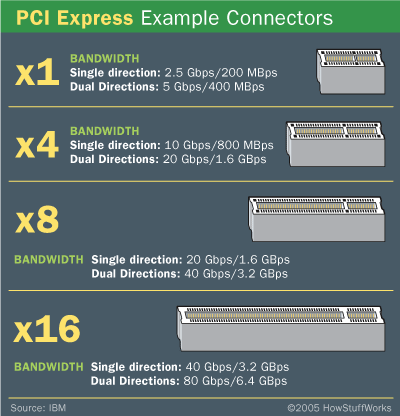External Graphics: The Way Forward For Gaming Laptops?
How does it work?
For you first to understand why external graphics might be an option for your laptop or gaming laptop, you must understand the basics of how external graphics docking works. Now, although I am no expert on this, the concept is relatively simple. Essentially, to provide graphics externally you need an interface which provides enough bandwidth for a good graphics card, this almost instantly eliminates USB 2 as this only provides 0.5Gb/s which is not enough bandwidth. USB 3 does show itself as a decent contender with 5Gb/s and arguably this is still not enough but currently 5Gb/s is the best we can do. So what option is now left? Well unsurprisingly it involves the PCI-E connection. The Majority of laptops (modern ones at least..) will possess a few PCI-E connectors on the motherboard, the most easy and accessible one would be for the wireless card. You can buy adapters which convert a full size physical PCI-E 2.0 16X lane into a PCI-E connection, to illustrate that idea for those finding it hard to picture have a look at the image below:

Essentially most laptops provide a PCI-E 2.0 1X slot or in some rare cases 4X slot to deal with either a wireless adapter or card reader. Now how much bandwidth can these lanes provide, well the image below should explain all:

Therefore we can see a PCI-E 1X slot (same as an ExpressCard slot) would provide 5Gb/s which is the same as USB 3.0 speeds whilst the PCI-E 4X slot provides 20Gb/s which is roughly double that of thunderbolt. You would be unlikely to find a useable PCI-E slot bigger than this and to be honest finding a PCI-E 2.0 4X slot is highly uncommon too.
So to recap how does it work? Well you have an adapter which fits a full PCI-E 2.0 16X size graphics card this then has a cable which attaches to an internal PCI-E connector (often achieved by removing a wireless card) or an express card adapter slot on your laptop and through this connection the external graphics card acts like an internal graphics card. It is as simple as that.

Why Do It?
Now that the basics have been covered. Why would you want to do it? Well this is a slightly more simple concept than how it actually works. In essence you would want to do this for a simple reason: you need a discrete class graphics card of some kind to provide your laptop with power it does not possess. The graphics card could be a gaming one or a professional card like an Nvidia Quadro required for CAD or high quality rendering. Either way the message here is simple, if you need more graphical power because your laptop does not possess it then an external graphics docking station is certainly a viable and sensible option. However, now you may be wondering that this is all well and good but what products are actually out there that will allow you to do this? Read on to the next page to find out.









Sounds good but still a bit of work, seems to defeat the object of a laptop if you then need an external graphics and monitor, the sony may be better if you can run it of USB3 no doubt USB4 could even follow in the future exciting though but any thing can happen I suppose. Will need it's own power supply.
"which only has good battery life due to the admission of any high end graphics hardware"
I think you mean omission…
Thank you!
where can buy it?
Very well written, and easily understandable by even those not very knowledgeable about computer hardware. Thankyou!
Or you can just get a gaming laptop that isn’t a piece of shit.
Why is nobody making a docking station that you can put a normal card in? I remember many years ago, before HP bought Compaq, they had a docking station that would fit PCI cards. Why don’t manufacturers use their docking station ports on the motherboard to pipe PCIe x16 slot to a large docking station solution that you can install a graphics card in. It’s been over 10 years since I saw these drop out of use but they were very good, and have been much missed by those that used to have twin displays they could game on with their work laptops.
Coz they’re idiots. I’ve always wondered why they never did too